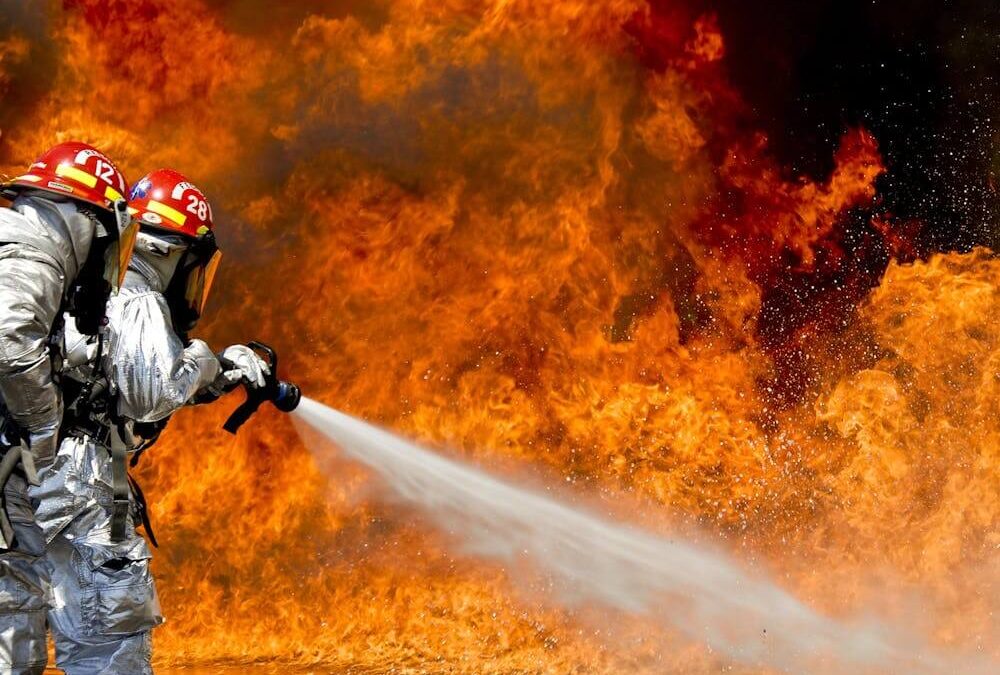Canada’s wildfire season has begun with unusual intensity and early timing, prompting states of emergency in Saskatchewan and Manitoba. Severe wildfire conditions are forecast across central and eastern Canada, and wildfire smoke is crossing provincial and national borders, affecting millions of people. Understanding the drivers of this early wildfire activity and how to prepare for both fire and smoke risks is essential for communities nationwide.
What Is Driving This Early Wildfire Activity?
Several factors are contributing to the early start and intensity of wildfires in Canada. Drought conditions, above-average temperatures in May, and dense, dry forest fuels create an environment primed for ignition and rapid fire spread. In northern regions like Saskatchewan and Manitoba, the typical “spring dip” period—when forests dry out before new leaves grow—has been exacerbated by extreme heat and dryness. This combination results in more frequent and intense early-season fires.
While early wildfire activity in northern parts of British Columbia is expected, concerns grow about how quickly southern regions like the Okanagan dry out and whether drought conditions will return later in the summer. Weather fluctuations influenced by the transition between El Niño and La Niña patterns add uncertainty to predictions.
Changing Fire Patterns Across Canada
Wildfire patterns vary across Canada due to differences in forest types. Eastern Canada’s mixed hardwood and conifer forests respond differently to dry spells than the boreal forests of the north and west, but the core risk factors—dry fuels and warm, dry weather—remain consistent. Northern latitudes in Canada are warming faster than the global average, which has extended the wildfire season and increased fire severity. Since 2017, British Columbia alone has seen over 7.3 million hectares burn, a land area more than twice the size of Vancouver Island.
How Can Residents Prepare for Wildfires?
Preparation at the individual level can improve wildfire resilience. Key steps include:
- Cleaning gutters and removing debris within one meter of buildings to reduce ignition risk.
- Relocating firewood and other combustible materials away from homes.
- Maintaining awareness of local fire bans and following safe practices with campfires and equipment.
- Preparing emergency “go-bags” with essentials and comfort items for all family members.
Long-term wildfire management will also benefit from proactive approaches such as fuel mitigation, prescribed burns, and culturally informed fire management practices. Currently, firefighting resources are stretched thin, making prevention and preparedness more critical than ever.
How to Protect Yourself When the Smoke Rolls In
Wildfire smoke poses significant health risks, particularly for people with respiratory or cardiovascular conditions. Smoke can aggravate asthma, increase the risk of cardiac events, and cause mental health stress due to prolonged indoor confinement. Because smoke travels across regions and even countries, coordinated public health responses are vital.
Practical measures to reduce smoke exposure include:
- Creating clean air shelters within homes or safe public indoor centers using HEPA air filters.
- Wearing well-fitted masks such as N95 respirators when air quality is poor.
- Reducing outdoor physical activity during heavy smoke events.
Real-Life Example: A Community’s Quick Response Saves Lives
During a sudden wildfire outbreak in a small central Canadian town, thick smoke forced an overnight evacuation. The local community center quickly transformed into a clean air shelter equipped with portable HEPA air purifiers donated by volunteers. Families with young children, elderly residents, and individuals with respiratory illnesses found refuge there. The town’s early warnings and well-prepared emergency kits allowed residents to leave safely and with essentials on hand. This rapid, organized response minimized health impacts from smoke inhalation and prevented injuries from the fire’s approach. I
Building Wildfire Resilience
Canada’s wildfire season is showing signs of increasing intensity and earlier onset due to climate and environmental changes. Awareness and proactive preparation are key to reduce wildfire risks and protect health during smoke events. F
